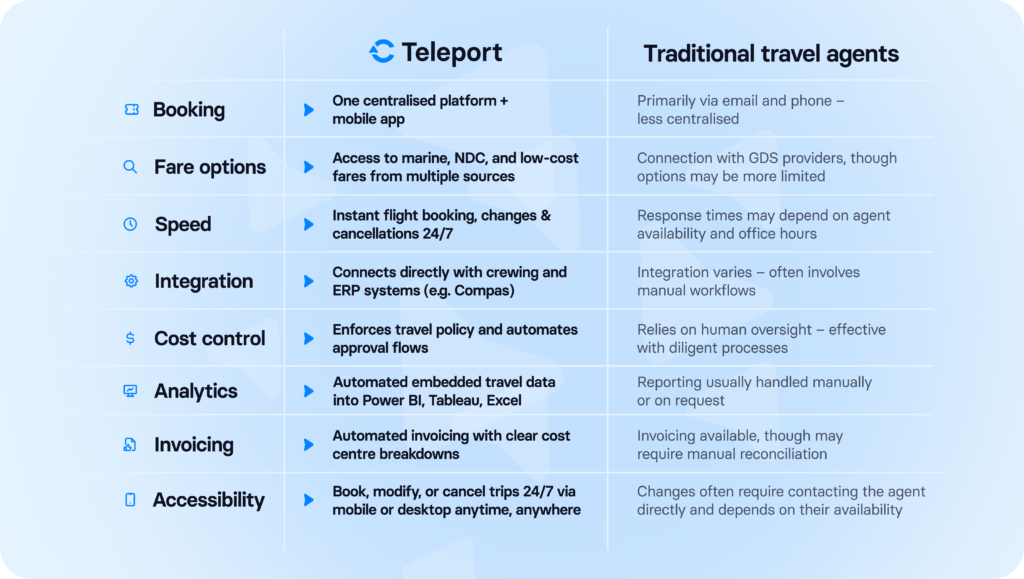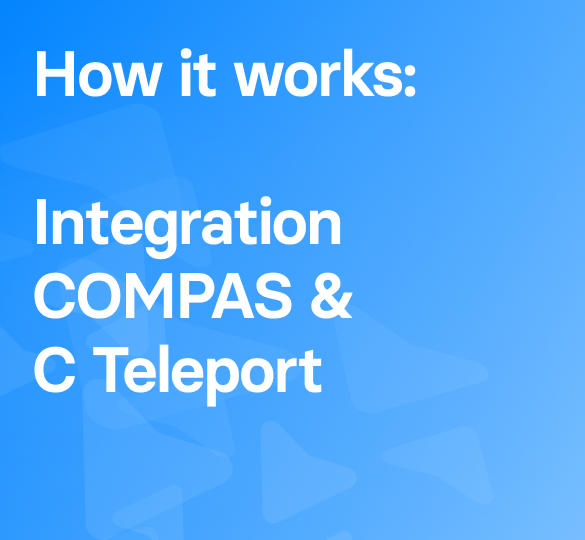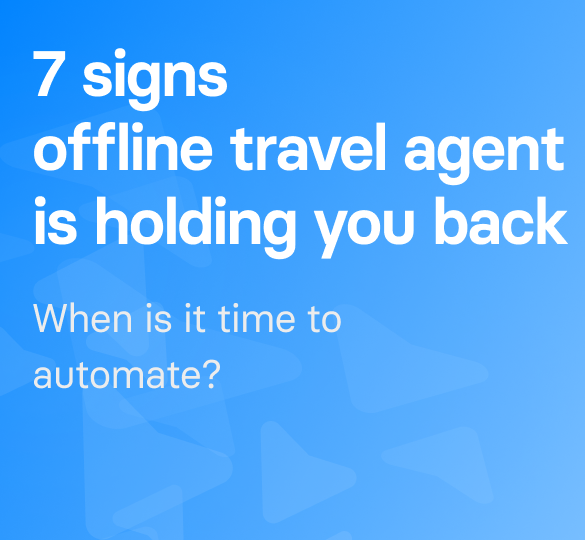Corporate travel teams in the business aviation, marine, offshore, and other industries have relied on traditional travel agents to handle their bookings for years. But as operations scale, schedules tighten, and travel budgets grow more complex, crew and operations leaders might wonder: Is it time to look for a more modern travel solution?
Here are seven real scenarios that signal it’s time to consider switching to an automated travel management platform.
1. Your travel volume has outgrown manual booking
Your crew is flying more than ever. But managing bookings, changes, and invoices by email or phone slows your team down and increases the risk of human error.
❌ Delayed changes, missed connections, and frustrated crew are all too common.
- With C Teleport, you can instantly book or change flights from your desktop or mobile — even at the last minute: no emails, back-and-forth, just smooth operations.
2. You can’t get real-time travel data when finance asks
Your CFO needs accurate, up-to-date data, but you’re stuck waiting for your monthly agent report. That’s not helpful when fares spike or plans shift.
❌ Without live insights, you’re reacting, not managing.
- With the automated travel solution, you get real-time dashboards, Power BI-ready reports, and a complete historical log of every booking step. Stay audit-ready, prove ROI, and adjust strategy on the fly.
3. Policy compliance feels like a guessing game
Enforcing travel policy becomes a headache when bookings happen across different tools or agents.
❌ Out-of-policy bookings slip through, and costs creep up.
- C Teleport builds your policy into the platform, from preferred fares to routing approvals. Travellers get guided choices, and you can access all historical data for every booking to keep track of all steps and be in control.
4. Disruptions highlight duty of care gaps
You must locate your team quickly if there is a sudden delay or geopolitical risk. But if booking data lives in spreadsheets and inboxes, you’re stuck.
❌ Disjointed data slows emergency response and puts the crew at risk.
- C Teleport gives you centralised visibility: know who’s flying where, rebook instantly, and meet your duty of care obligations — all from one dashboard.
5. Manual approvals cost you time and money
If your travel approval process involves emails or chasing managers, you’re likely missing out on the best fares.
❌ Delayed approvals mean rising prices and an unhappy crew.
- With C Teleport, approvals are automated and built into the booking flow, so your team stays fast, compliant, and within budget.

6. You’re flying blind in vendor negotiations
If your travel data is spread across spreadsheets, inboxes, and outdated systems, you’re not negotiating from a position of strength.
❌ Without consolidated insights, you can’t prove volume or unlock better deals.
- C Teleport tracks and structures every data point, giving you complete visibility for airline negotiations and vendor reviews.
7. Reimbursements are a recurring headache
Your finance team is chasing receipts, reconciling spreadsheets, and plugging budget gaps caused by late or missing submissions.
❌ Fragmented expense data leads to reimbursement delays, policy violations, and financial leakage.
- With C Teleport, all travel expenses are logged, categorised, and centralised in real time — no more manual tracking or missed receipts. You can align travel data with your finance tools, avoid duplicate reimbursements, and reduce expense claims gone wrong.
✅ Ready to switch? Here’s what you’ll gain
Switching from a traditional travel agent to a digital travel management platform isn’t about replacing people—it’s about giving your team the tools to be faster, more efficient, and more in control.
- Real-time visibility into crew travel and costs
- Access to marine, offshore, energy and aircrew fares
- Built-in policy enforcement and approvals
- Centralised booking and invoicing across teams
- Integration options with HR, finance, and crewing systems
- Export-ready and Power BI-compatible reporting
- Historical logs to track every booking step


